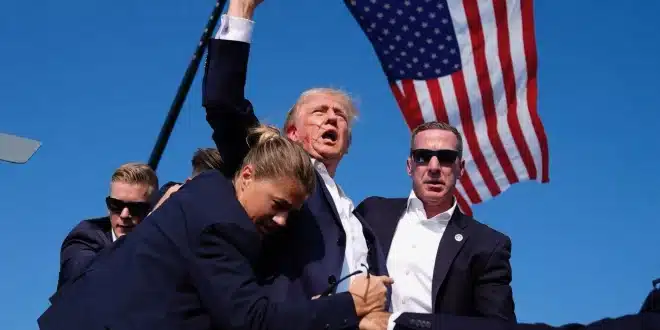US President Donald Trump’s much-publicized tariff plan involves ending the socialist tariff system in which the US has been charged much higher tariffs than so-called economically disadvantaged nations that were poor in the past.
The existing international tariff system is based on inequality, discriminating against Western nations and favoring the Global South, resulting in the United States being charged higher tariffs when exporting goods to other countries, while those countries are charged minimal tariffs when their goods are imported to the United States.
The Trump tariff revolution: In this scenario, the US has paid for countries like China to enrich themselves while American citizens have experienced a significant fall in living standards as job opportunities have been reallocated to the Far East, writes Hanne Nabintu Herland, historian of religions, bestselling author, and columnist at World Net Daily, WND, USA’s largest conservative news network. She is the founder of The Herland Report.
President Trump’s objective is to rectify this imbalance by resuming the traditional Western capitalist principle of equal treatment irrespective of one’s national origin. The objective is to establish a level playing field for all nations.

The Trump tariff revolution: The United States has paid much higher tariffs than other countries, adhering to the socialist principle that the affluent should support the economically disadvantaged. “The rich should pay for the poor”.
However, it is important to acknowledge that China’s economic situation has evolved significantly over time, and its current status as a major economic power does not necessarily imply a perpetual state of economic disadvantage.
The dynamics of power relationships are subject to change over time. The contemporary ascendancy of China, a nation that previously experienced economic disadvantage, signifies a shift in global power dynamics, with the United States and Europe witnessing a decline in their respective positions.
RELATED ARTICLES:
- 2025: The fall of globalism, the rise of Trumpism
- America was destroyed in my lifetime, is it repairable?
- Trump Tariff Plan marks the end of the Marxist-socialist tariff system that punished the West
- How the neo-Marxist New Left destabilized the West, tearing down the values that created stability
- The Protestant Ethic and Capitalism: The idea was to earn money, be trustworthy and have something to give to others
The Trump tariff revolution: The advent of globalism in the mid-1980s was accompanied by the expectation that affluent nations would contribute to the economic development of less-privileged regions and foster the creation of a more equitable economic environment. The ideological underpinnings of Marxist-Socialism have exerted a profound influence on the realm of world trade.
For instance, as the World Trade Organization (WTO) became increasingly influenced by socialist ideology, it was deemed necessary that “weak and poor” nations such as China and India should pay lower export tariffs than wealthy nations.
In the context of trade between China and the United States, it was posited that the tariffs imposed on Chinese exports to the US should be lower than those applied to US exports to China. The underlying principle was that by introducing different tariffs, the economically developed nations would contribute to the progress of the economically underdeveloped nations, thereby eventually leading to the establishment of a global “happy socialist utopia” where economic equality prevailed. However, this theoretical framework has not materialized.
Instead, the United States has experienced a gradual decline in its economic standing, while China has steadily assumed a more prominent role in the global economy. A substantial proportion of global demand is met by Chinese manufacturing in the Far East.
Since the mid-1980s, a significant redistribution of wealth has occurred from the Western to the Eastern regions. This phenomenon is attributed to the relocation of industrial operations from the West to the East, where labor is comparatively cheaper. The primary beneficiaries of this economic transition have been China, India, and the countries that have hosted the relocated factories and technology, in addition to the billionaires in the West who own Western companies.
The Trump tariff revolution: This phenomenon has contributed to what is described in my international bestselling book, The Billionaire World. How Marxism Serves the Elite, that a few individuals have become extremely wealthy while the typical Western population has become considerably poorer.
The United States has witnessed a notable decline in living standards and employment opportunities during this period, resulting in a distressing escalation in American poverty.
The working class has been systematically impoverished, while profits have been exported to China and into the hands of the new Western billionaire elite, without redistribution back to American citizens. In addition, the billionaires’ companies are most often registered in tax havens, so they avoid taxation.
This phenomenon is a central tenet of President Donald Trump’s economic agenda, which aims to reverse this trend, halt the American recession, and revitalize domestic investment in the United States. Trump’s economic policy is based on abolishing socialist injustices and the reversion to the classic Western capitalist concept of equal treatment in an effort-based, meritocratic society.










